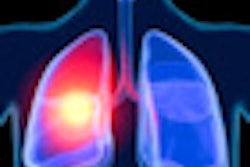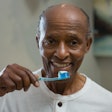
Oral microbiota could play a role in identifying patients at risk for healthcare-associated pneumonia, according to a study presented October 22 at the Infectious Diseases Society of America annual meeting in Boston.
"The bodies of healthy individuals are cohabited by an incredible number of bacteria, where bacterial cells outnumber human cells 10 to 1," said study author Samit Joshi, DO, MPH, from the department of internal medicine at the Yale University School of Medicine, in an interview with DrBicuspid.com.
Scientists are now learning how different communities of bacteria reside in different parts of the body and how they can directly or indirectly influence states of health or disease, including pneumonia.
— Samit Joshi, DO, MPH
Dr. Joshi and his colleagues wanted to determine if an association existed between the oral microbial profile and subsequent development of pneumonia.
They used advanced DNA sequencing to show that the types of bacterial communities that normally reside in adults' mouths change substantially as their risk for developing pneumonia increases.
While presenting his study at the meeting, Dr. Joshi reported that there was a distinct divergence between the oral bacteria of mechanically ventilated intensive care unit (ICU) patients who developed pneumonia and those who did not.
"In the case of hospitalized adults on mechanical ventilators, the change in bacteria preceded the development of pneumonia," Dr. Joshi said. "This suggests that changes in oral bacteria play a role in the risk for developing pneumonia."
Streptococcaceae dominant
Healthcare-associated pneumonia is a growing public health problem, but strategies to identify high-risk patients remain problematic, according to Joshi and his colleagues. While impaired oral hygiene is a known modifiable risk factor, the precise alterations in oral microbiota are unknown, they added.
The researchers looked at 37 subjects who were prospectively followed for a one-month period. The subjects included healthy community-dwelling adults (19, average age 60) and those at risk for healthcare-associated pneumonia: nursing home residents (10, average age 86) and mechanically ventilated ICU patients (8, average age 51).
The authors used a technique called 16S rRNA gene pyrosequencing to compare the oral microbial profiles of the study participants.
They found that the dominant bacteria in the mouth were Streptococcaceae but that the proportion differed across the three clinical settings, with community dwellers averaging 65%, nursing home residents at 43%, and the mechanically ventilated ICU patients at 33% (p = 0.02 for ventilator patients versus community dwellers).
While the ICU subjects who subsequently developed pneumonia had a significantly smaller average proportion of oral Streptococcaceae (7%) at baseline compared with the ICU subjects who did not develop pneumonia (49%, p = 0.02), the proportions of three other groups -- the Enterococcaceae, the > Micrococcaceae, and the Mycoplasmataceae -- rose sharply in this group.
Also, the bacterial community composition among ICU subjects who developed pneumonia was significantly different from the ICU subjects who did not develop pneumonia.
"Oral microbial profiles differ in community-dwelling adults compared to those in healthcare settings at high risk for pneumonia," the authors concluded. "Mechanically ventilated ICU subjects who subsequently developed pneumonia had a distinct divergence of their oral microbial profiles compared to ICU subjects who did not develop pneumonia."
Pyrosequencing of oral microbiota could be helpful in identifying patients at high risk of healthcare-associated pneumonia, they added.
"By discovering how microbial communities change prior to the development of pneumonia, physicians and scientists could develop new techniques to identify patients at risk for pneumonia and discover new ways to prevent pneumonia in the future," Dr. Joshi concluded.
However, it will still be a number of years filled with additional intensive research before these preliminary findings can be used to improve prevention and clinical care for patients at high risk of developing pneumonia, he added.



















